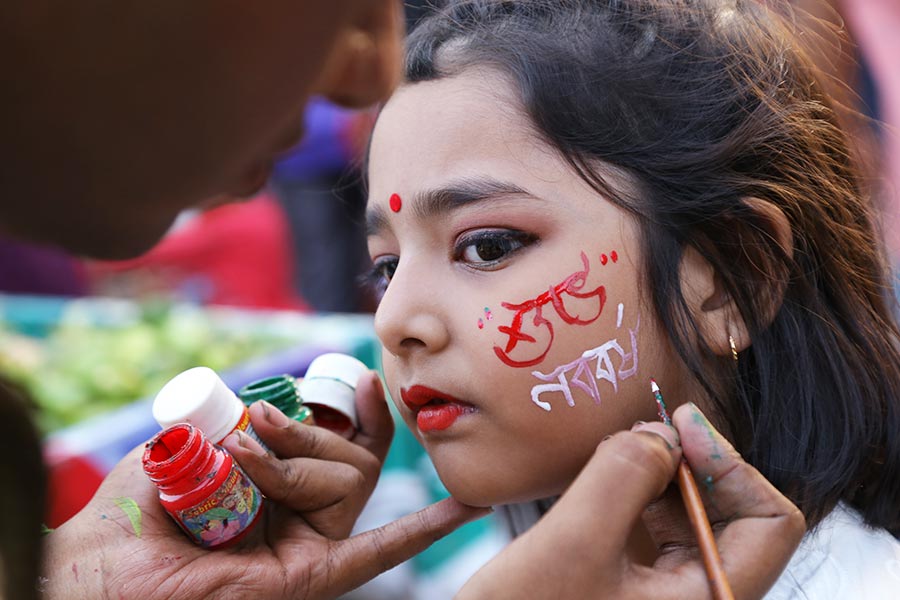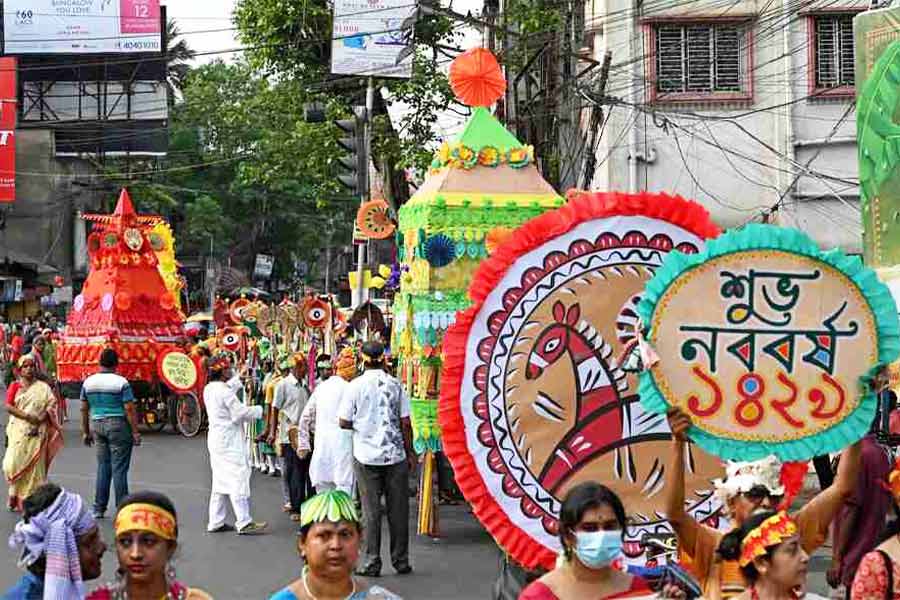
Poila Baisakh — West Bengal: In Bengal, the air is full of celebration as Poila Baisakh, the Bengali New Year, arrives. This festival, celebrated in mid-April, is more than just a date on the calendar — it’s a cherished emotion. Streets adorned with ‘Chaitra’ decorations signify a fresh start. Every nook and corner of Bengali households come alive with preparations, setting the stage for a new beginning
TT Archives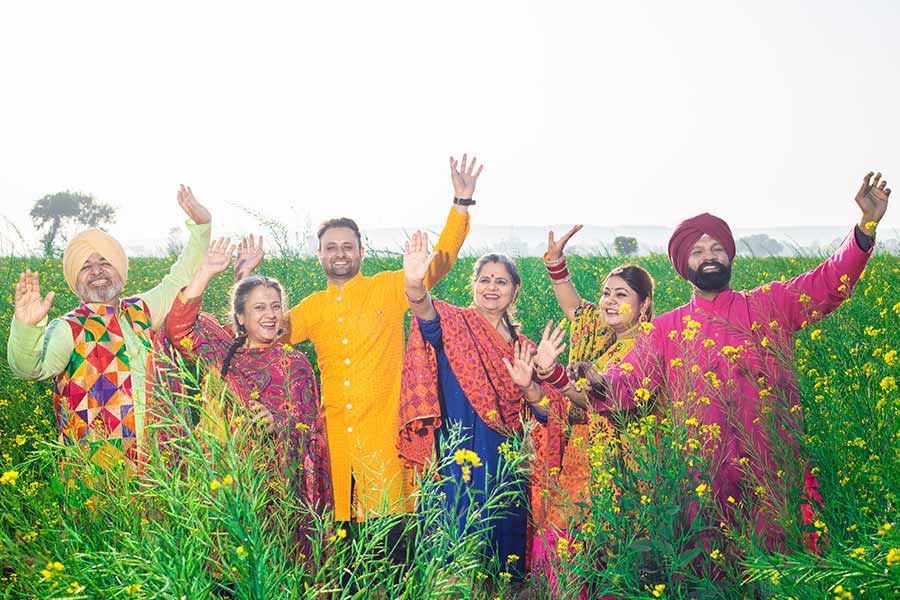
Baisakhi — Punjab: In Punjab, Baisakhi has long been celebrated as a harvest festival. But in 1699, it gained new significance when Guru Gobind Singh chose this day to establish the Khalsa, the community of initiated Sikhs. The courageous act of the ‘Beloved Five’ at the festival marked a profound moment in Sikh history
Shutterstock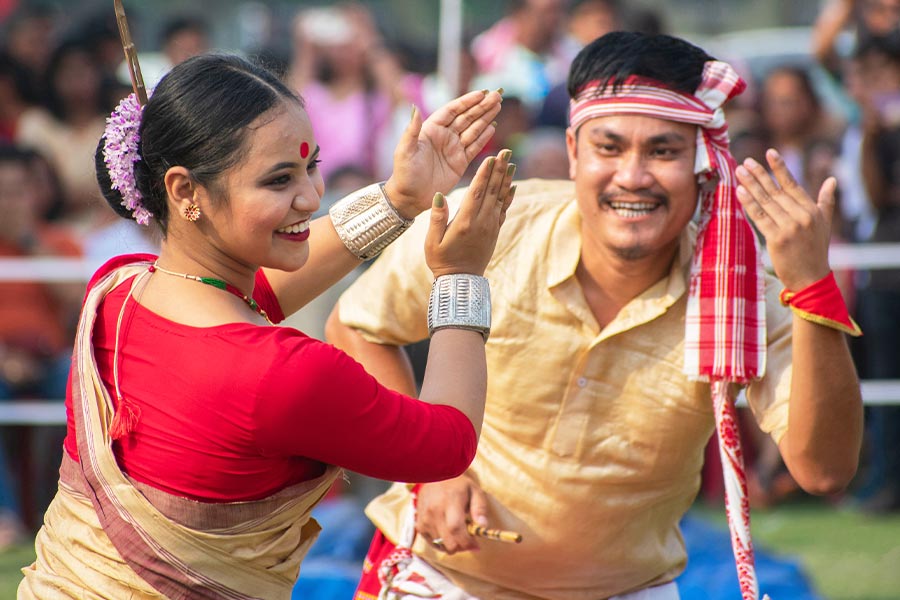
Bohag Bihu — Assam: Moving eastward to Assam, Bohag Bihu resonates with the joy of farmers celebrating a successful harvest and hoping for a fruitful year ahead. Men and women perform traditional dance amidst feasting and singing, celebrating the abundance of nature. The seven days of Bohag Bihu are marked by rituals, early morning baths with turmeric paste, and shared blessings
Shutterstock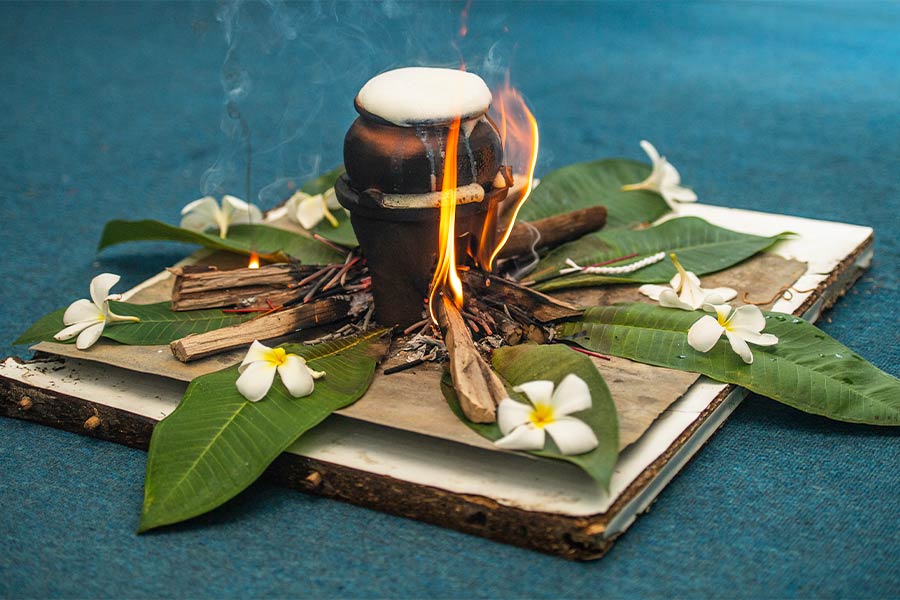
Puthandu — Tamil Nadu: In the south, Tamil Nadu welcomes the New Year with Puthandu, a celebration steeped in ancient traditions. According to Tamil literature, the universe was born anew on this day, as Lord Brahma initiated creation. Families gather to honour this renewal with rituals and a feast of symbolic dishes
Shutterstock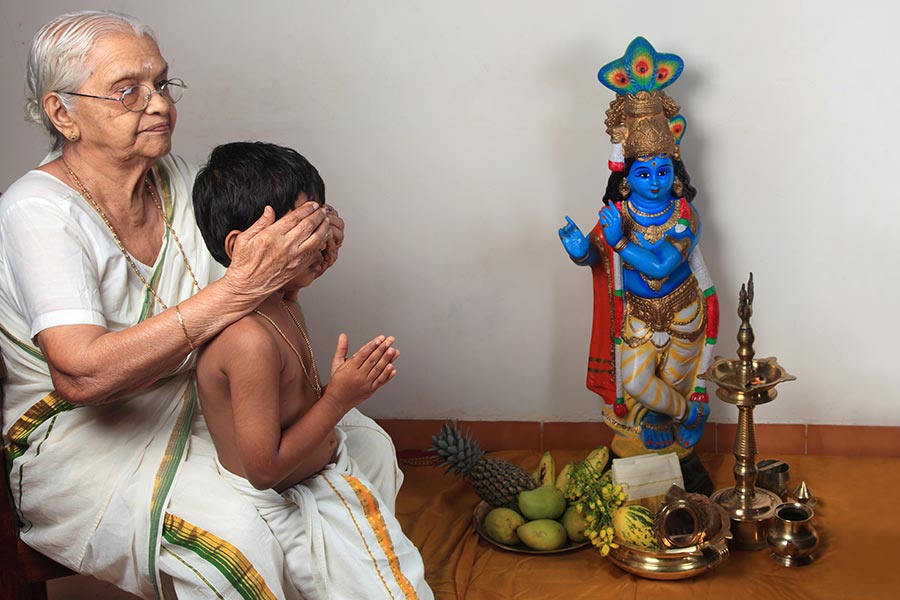
Vishu — Kerala: In Kerala, the arrival of Vishu is met with an onset of mythological tales, from the victory of Lord Krishna over demons to the return of Surya Dev. The festivities and traditions include visits to temples like Sabarimala and Guruvayur and the joyous tradition of elders giving ‘Kaineettam’ (gift) to children
Shutterstock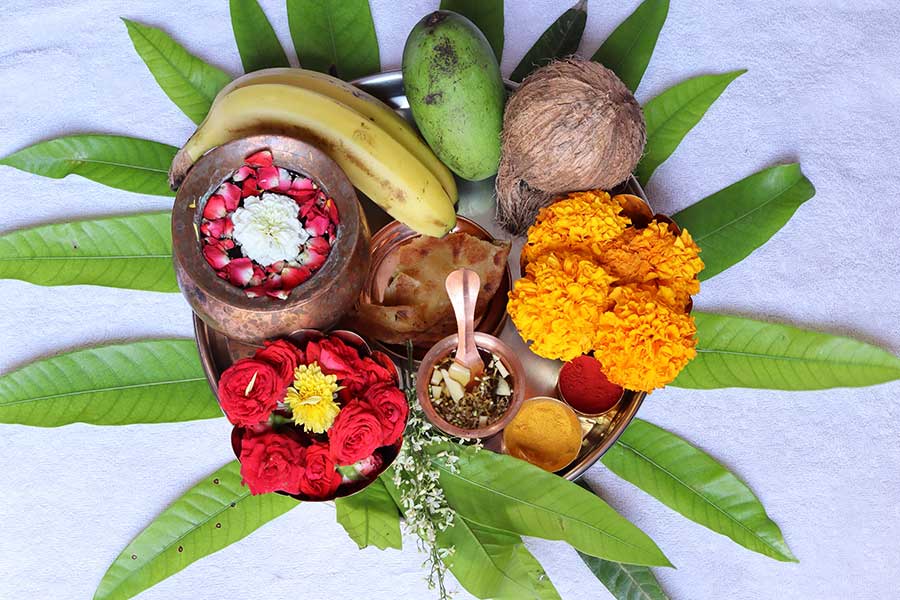
Ugadi — across Andhra Pradesh, Telangana, Karnataka: The southern states of Andhra Pradesh, Telangana and Karnataka celebrate Ugadi – marking a new era and the awakening of Lord Vishnu. The festival begins with an oil bath, prayers, and the preparation of ‘Ugadi Pachadi,’ reminding people of life’s diverse experiences. Homes are decorated with mango leaves and rangolis to welcome the New Year. It’s a time of spiritual reflection and familial bonding
Shutterstock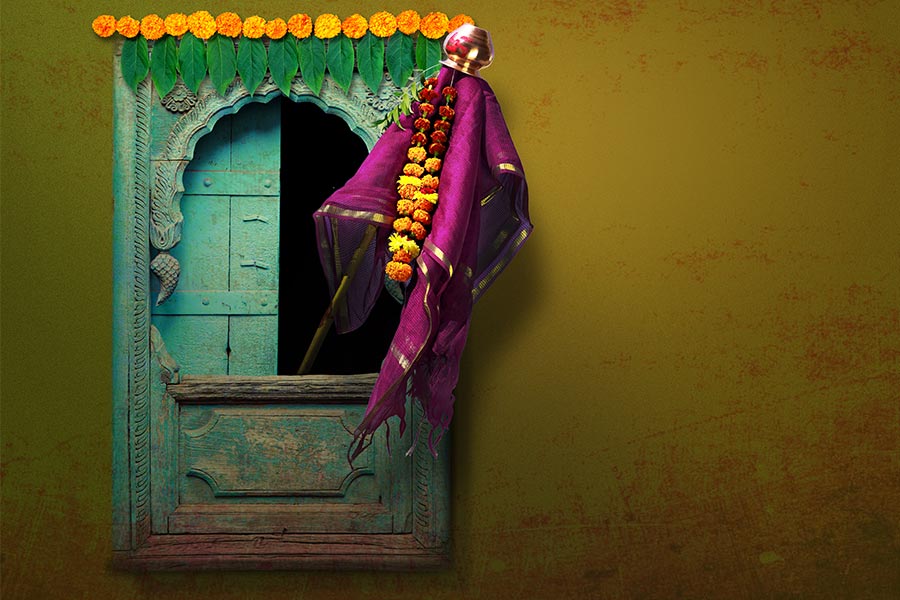
Gudi Padwa — Maharashtra: In Maharashtra, Gudi Padwa signifies the start of the lunisolar new year, with vibrant house decorations and traditional flags (‘Gudi’), accompanied by dancing, processions, and delectable festival dishes. ‘Padwa’, derived from Sanskrit, marks the day following the new moon. Legends from Hindu mythology attribute the creation of the universe to Lord Brahma on Gudi Padwa, and also credited with introducing the concept of time. Additionally, the festival holds cultural importance, symbolising the harvest of Rabi crops and commemorating Lord Rama’s coronation after defeating Ravana. Another tale links Gudi Padwa to the inauguration of the Shalivahan calendar after a historic victory over the Huns in the 1st century
Shutterstock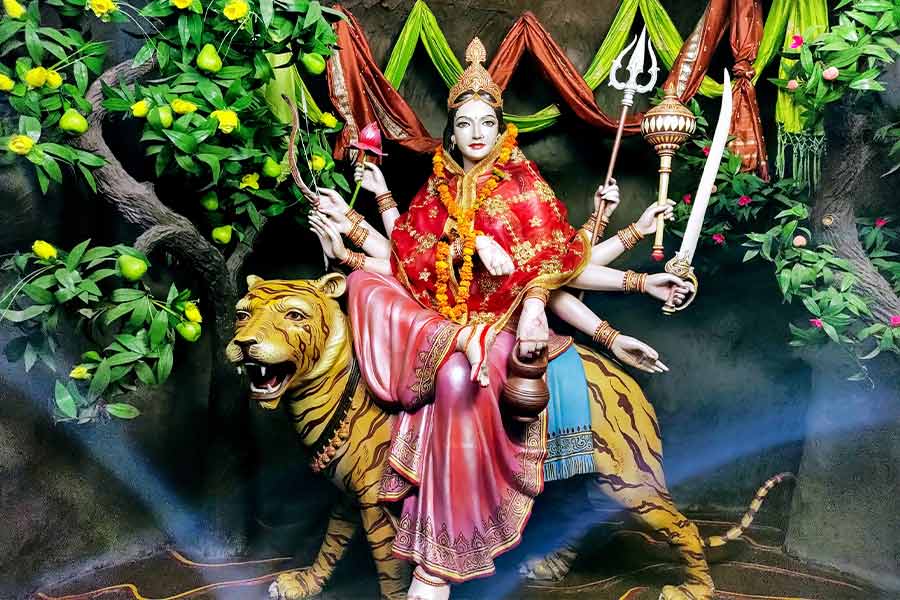
Chaitra Navratri — across north India: Chaitra Navratri is celebrated across north India, with devotees worshipping Goddess Durga and celebrating the victory of good over evil. The festival culminates with Ram Navami, commemorating Lord Rama’s birth and the onset of spring. The festival heralds the arrival of spring with traditional fasting observed by families across the region
iStock